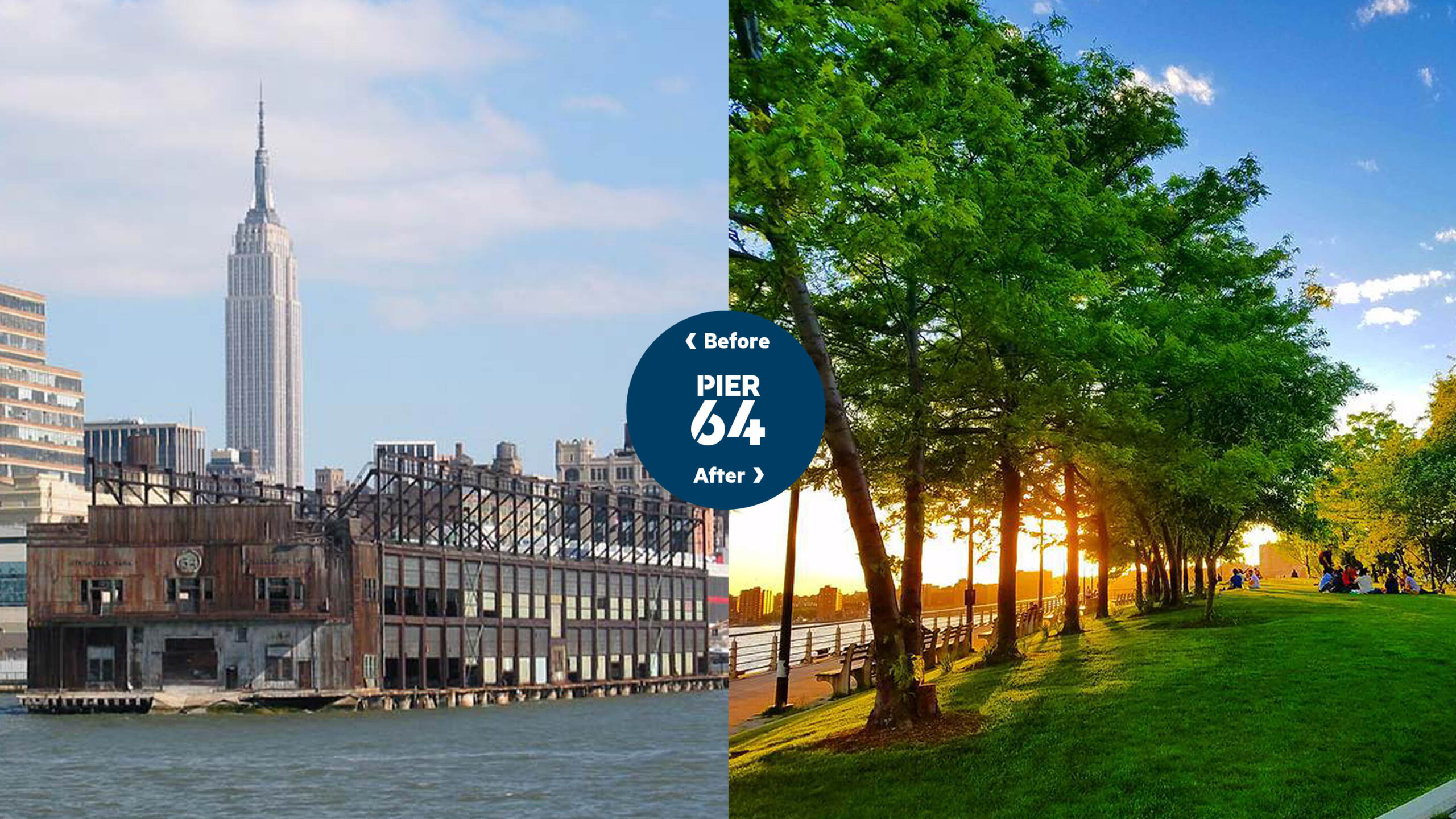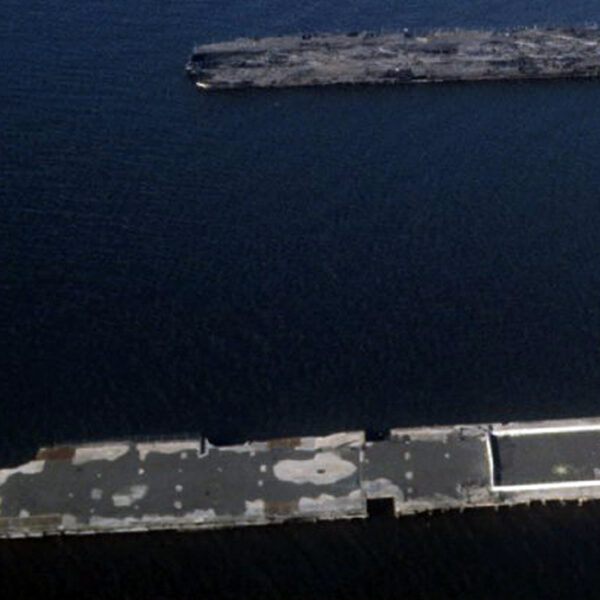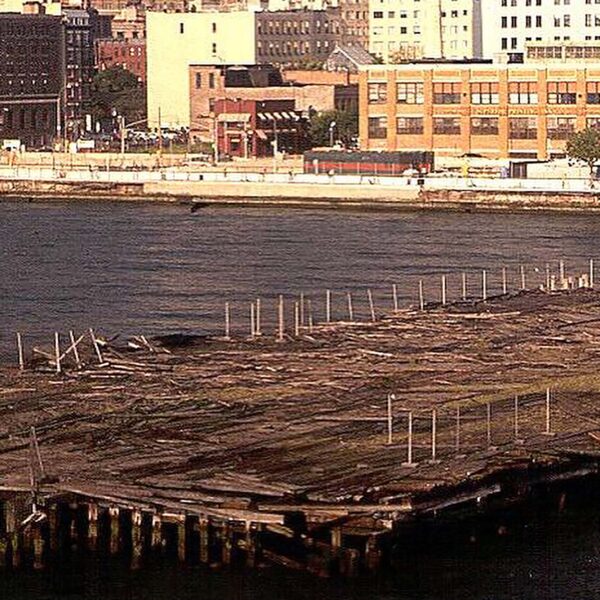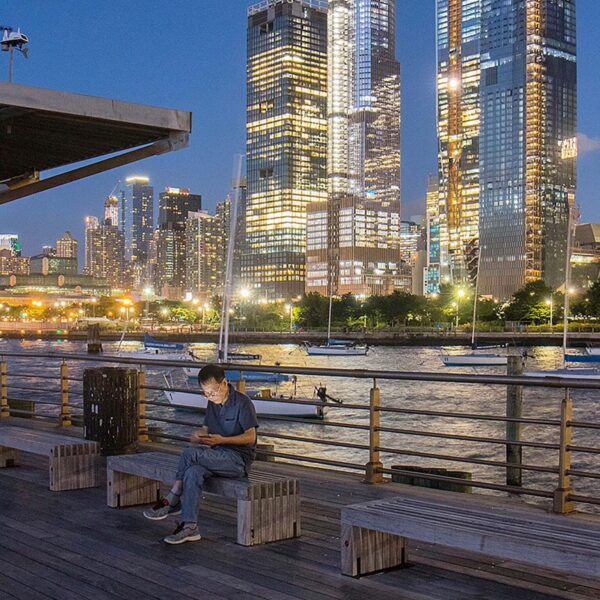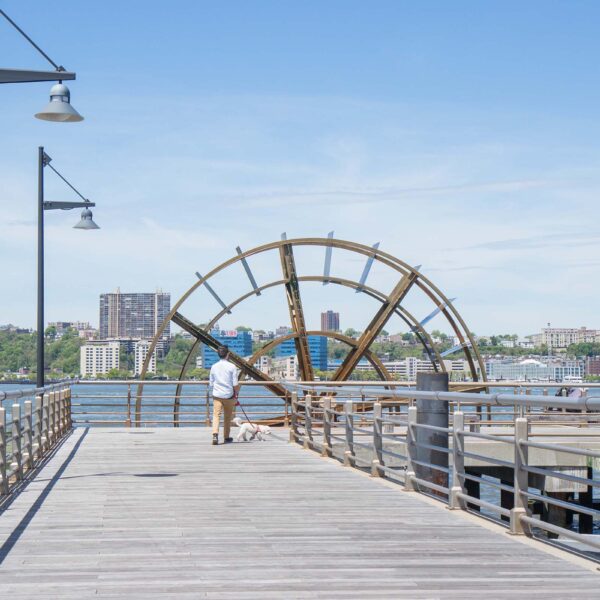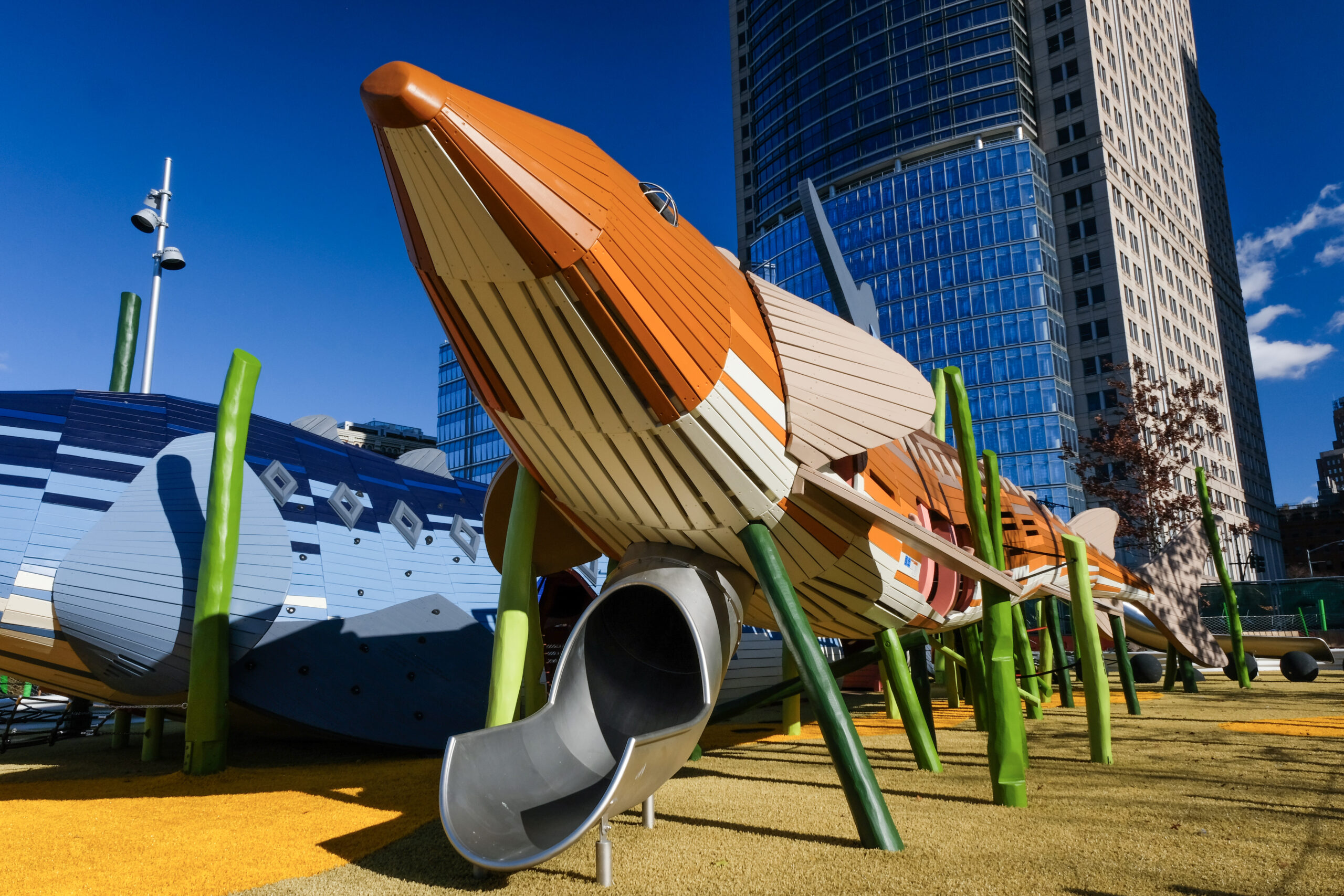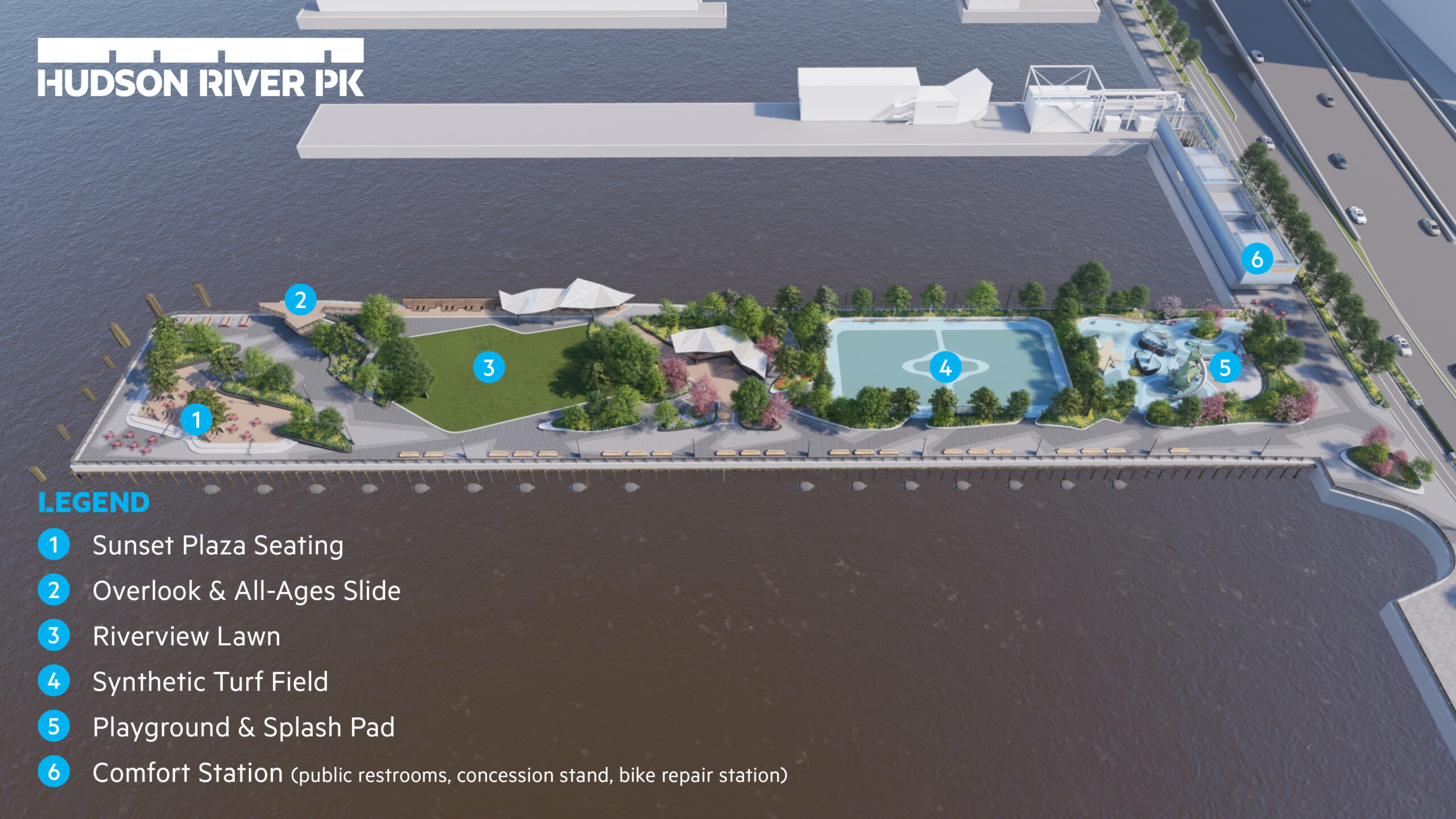Hudson River Park is a 550-acre public park that runs along four+ miles of waterfront on the west side of Manhattan. The Park’s recreational piers, distinctive upland areas and protected Estuarine Sanctuary provide millions of New Yorkers and visitors from around the world with a profound connection to the Hudson River and countless hours of enjoyment running, walking, rowing, playing, dancing, relaxing and communing with friends, family and nature.
Hudson River Park offers a wide variety of free cultural and fitness events, active and passive recreation, and educational and environmental programs designed to deepen the community’s engagement with the Park and the River and cultivate awareness through meaningful and memorable experiences.
Built on the remnants of New York’s industrial waterfront, Hudson River Park was established in 1998 through the Hudson River Park Act, and is run by the Hudson River Park Trust, a unique partnership between the City and State of New York. Hudson River Park’s operations and maintenance are funded through rents, fees, sponsorships and grants, along with private donations from individuals, businesses and foundations. Design and construction of the Park are funded principally by the State, City and Federal governments, but also by donations and other private funding.
Keep exploring to find more remarkable pier transformations and for a glimpse into the new open, green space coming soon to Hudson River Park.
The Promise of the Park
By the 1980s, Manhattan’s Hudson River waterfront was largely a derelict landscape of barbed wire, crumbling piers, parking lots and decaying warehouses. After the sharp declines in maritime commerce in Manhattan and the demise of the ill-fated Westway plan, New Yorkers were given an opportunity to reimagine the city’s post-industrial waterfront. Thanks to the immense efforts of the local community, the West Side Task Force (1986), the West Side Waterfront Panel (1990), the Hudson River Park Conservancy (1992), and a historic agreement between New York City and New York State (1998), New York committed its resources to a new waterfront park on the Hudson River. Visit Our West Side Story for a brief timeline of historic moments and Park milestones, or take some time to reflect on some of the dramatic changes that have occurred since Park construction began by reviewing the slideshow below.
Be Our Friend
The Park’s designated fundraising partner is Hudson River Park Friends, an independent nonprofit 501(c)(3) organization, dedicated to the completion, care and enhancement of Hudson River Park. Friends helps people get involved with the Park, creating opportunities for private contributions to and participation in the Park’s operations and growth, and benefits the Park and the diverse communities it serves to help guarantee its future for generations to come.
More Parkland
Take a look at the exciting new open spaces that recently opened or are coming to NYC soon:
Beyond new open space, the Park is also advancing habitat enhancement and research initiatives for the Sanctuary. Hudson River Park is also leading citywide conversations about the extent and effects of plastics in our waters, eliminating plastics from the Park and composting.
While these projects advance, Hudson River Park serves our city residents and guests by connecting them to the waterfront — for culture, for recreation and for the environment. Hudson River Park has rejuvenated neighborhoods and brought desperately-needed green space to millions of New Yorkers and to visitors from across the globe. Though its operations are privately funded, Hudson River Park is a public park, free and open to all.
